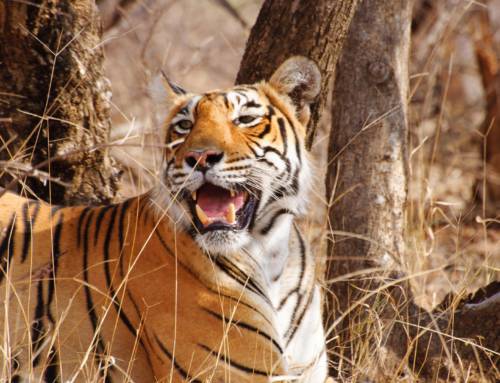Author: Krithi K. Karanth
This is the first article from our three-part series titled Biodiversity Outside Protected Areas.
In a recent study, scientists from the Centre for Wildlife Studies and collaborators have found that the coffee, rubber and areca agroforests in Karnataka support 204 bird species, including 13 bird species found exclusively in the Western Ghats. This highlights the supporting role of agroforests in conserving wildlife.
Agroforestry is a type of cultivation which combines agriculture and forestry – the main crop is grown alongside native trees and shrubs, resulting in a more biologically diverse landscape with increased yield. For example, in shade-grown coffee the forest understory is replaced with coffee trees, but the taller canopy is retained. These lush green plantations are home to a vast diversity of insects, amphibians, reptiles, mammals, birds, and bats.
In India’s Western Ghats, small and isolated protected areas, like Bhadra Tiger Reserve in Chikmagalur, are surrounded by a variety of land-use types, most of which are agroforests. These agroforests are being increasingly recognized for the support they provide to wildlife as habitats and corridors for movement. In this study, CWS scientists compared bird diversity between areca, coffee and rubber agroforests, which are which are the most widely grown plantation crops in Karnataka’s Western Ghats.
This research effort involved intensive research in 187 plantations covering an area of 30,000 sq km – taking the team two years to complete. This makes it one of the most comprehensive assessments of tropical bird diversity outside protected areas conducted in the world.
The study found an astounding 204 bird species across the coffee, rubber, and areca plantations, of which 13 are endemic to the Western Ghats. The results show that coffee agroforests support higher diversity and abundance of birds when compared to areca and rubber. Large-bodied frugivores (fruit-eaters) like pigeons and hornbills were found in much higher densities in coffee. These birds play a very important role of seed-dispersal and maintenance of forest trees in the region.
The scientists found a clear positive association of tree density and tree cover in the surrounding areas with bird diversity. Changing agricultural practices that open-up shade tree canopy, or switching from coffee and areca to monocultures, such as rubber, can seriously damage the ability of these agroforests to support birds.
Agroforests of the Western Ghats play a critical supplementary role in conserving India’s birds. The authors note that the biodiversity value of agroforests discovered in the study should be incorporated into future planning and policy decisions to facilitate and promote long-term biodiversity conservation. These scientific results should be integrated with policy and markets so that biodiversity-rich agroforests can be incentivized to promote sustainable farming practices that enhance birds in coffee, rubber and areca and other agroforests.
Research Article: Producing Diversity: Agroforests Sustain Avian Richness and Abundance in India’s Western Ghats – Krithi K. Karanth, Vishnupriya Sankararaman, Shashank Dalvi, Arjun Srivathsa, Ravishankar Parameshwaran, Sushma Sharma, Paul Robbins, and Ashwini Chhatre – Frontiers in Ecology and Evolution, 2016
You can access the original research article here
You can access the Kannada translation here
This article was previously published in Conservation India. You can access it here



